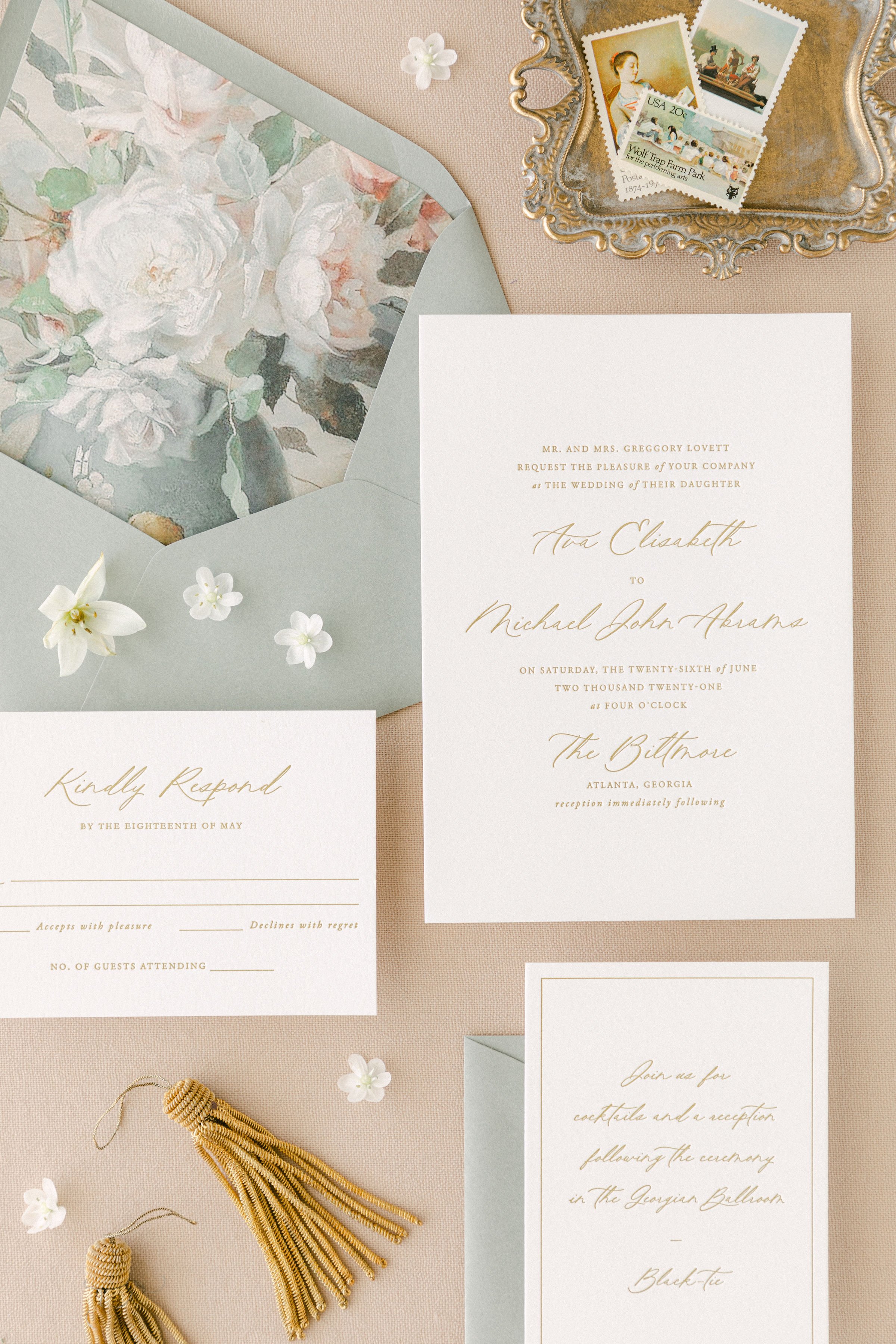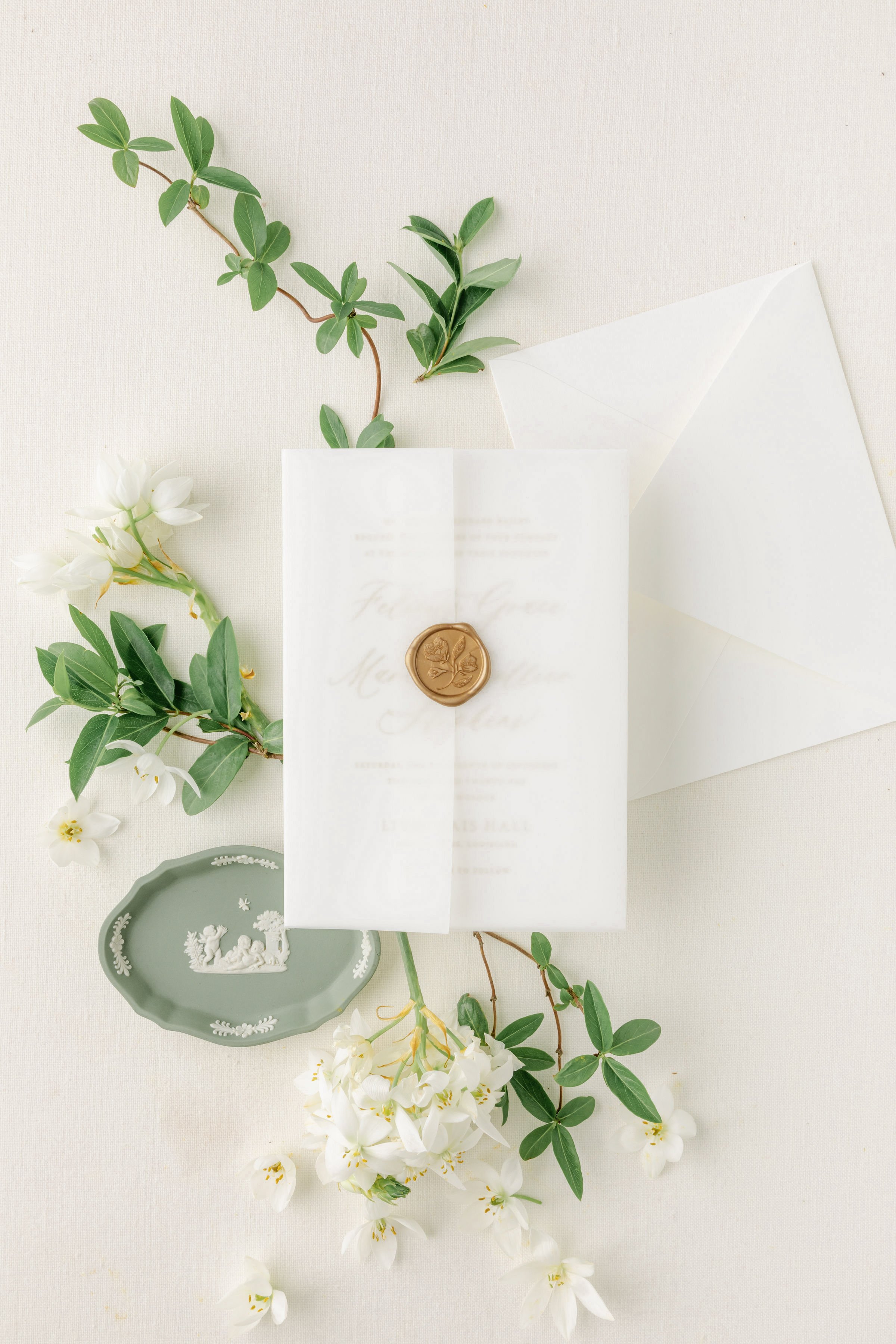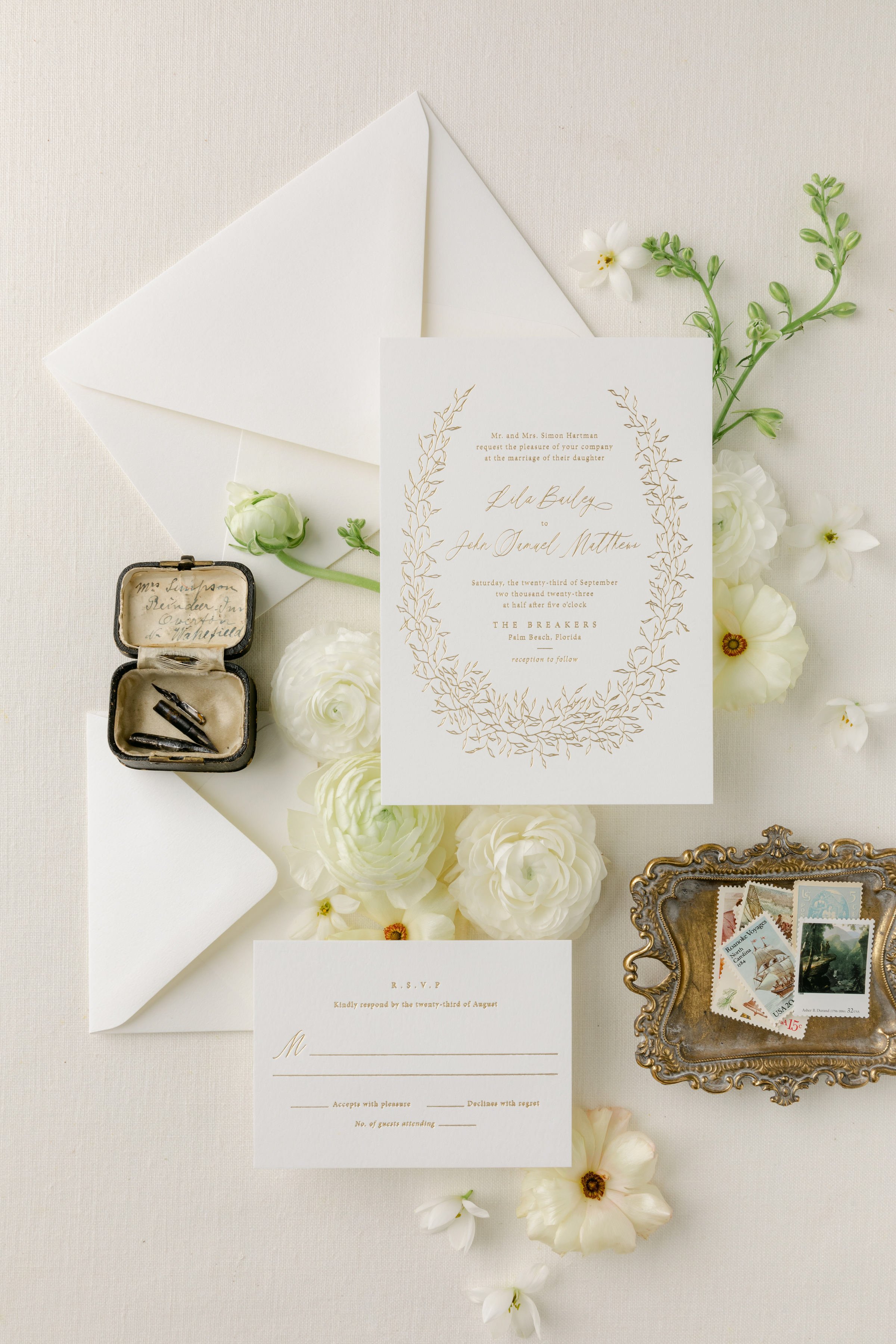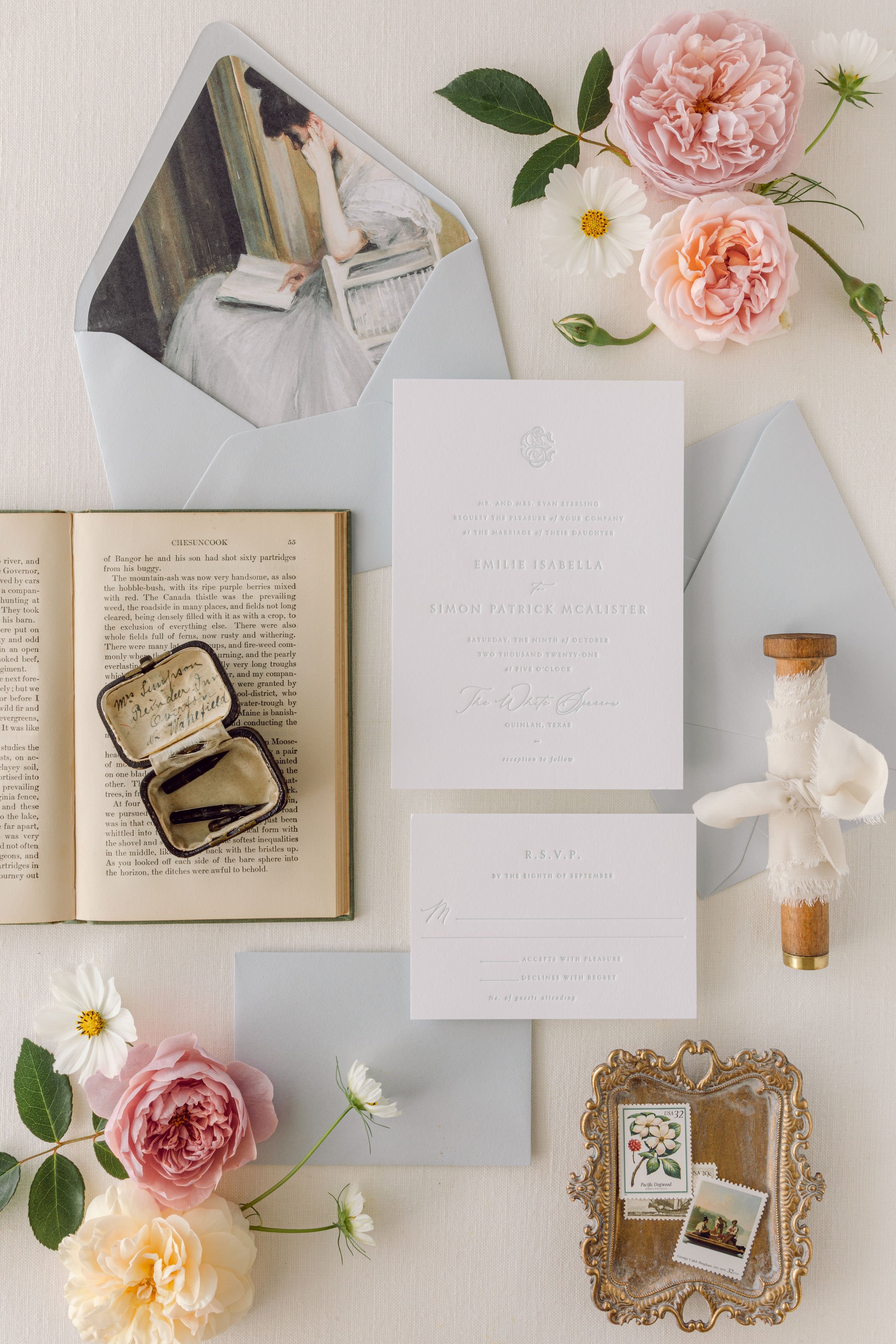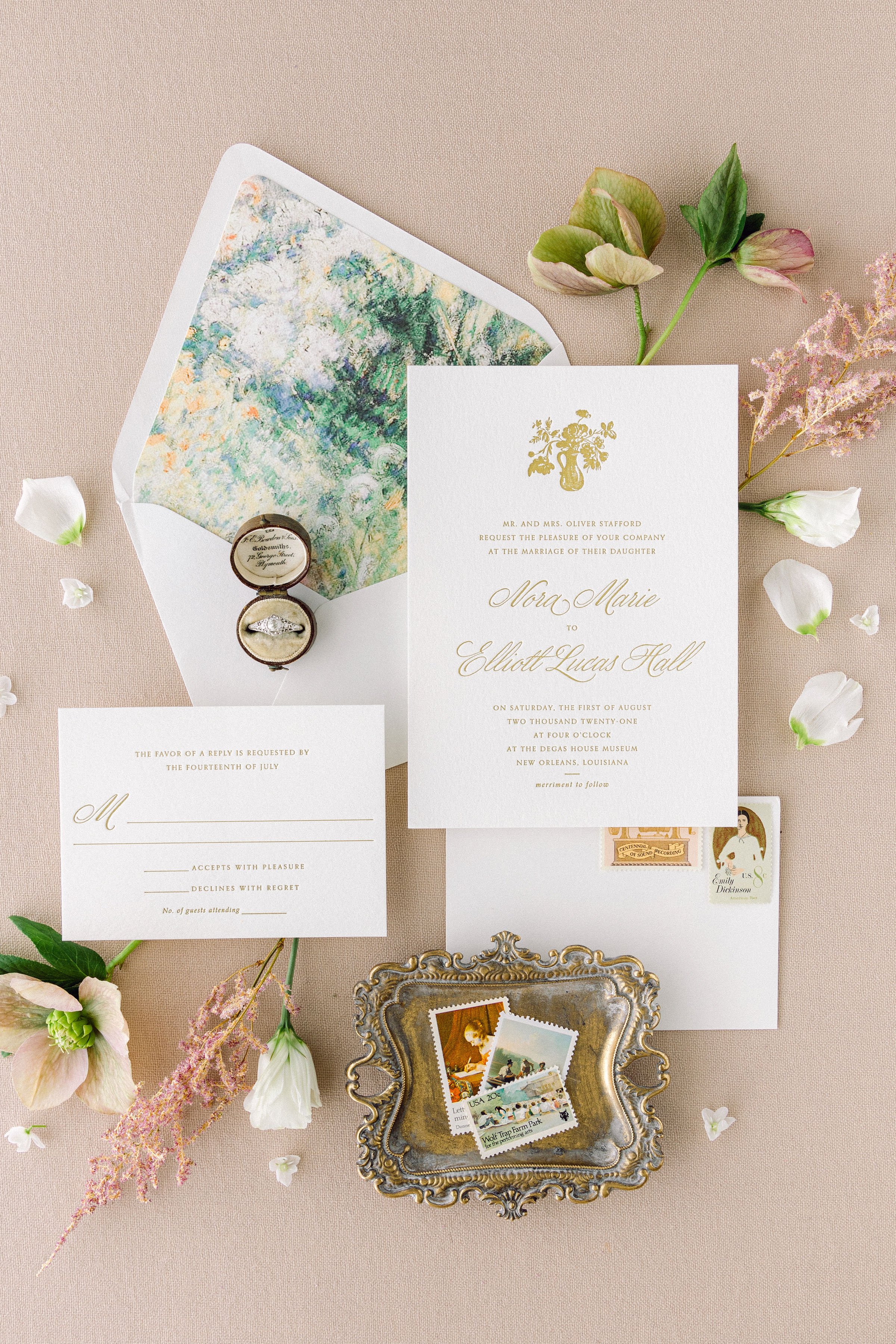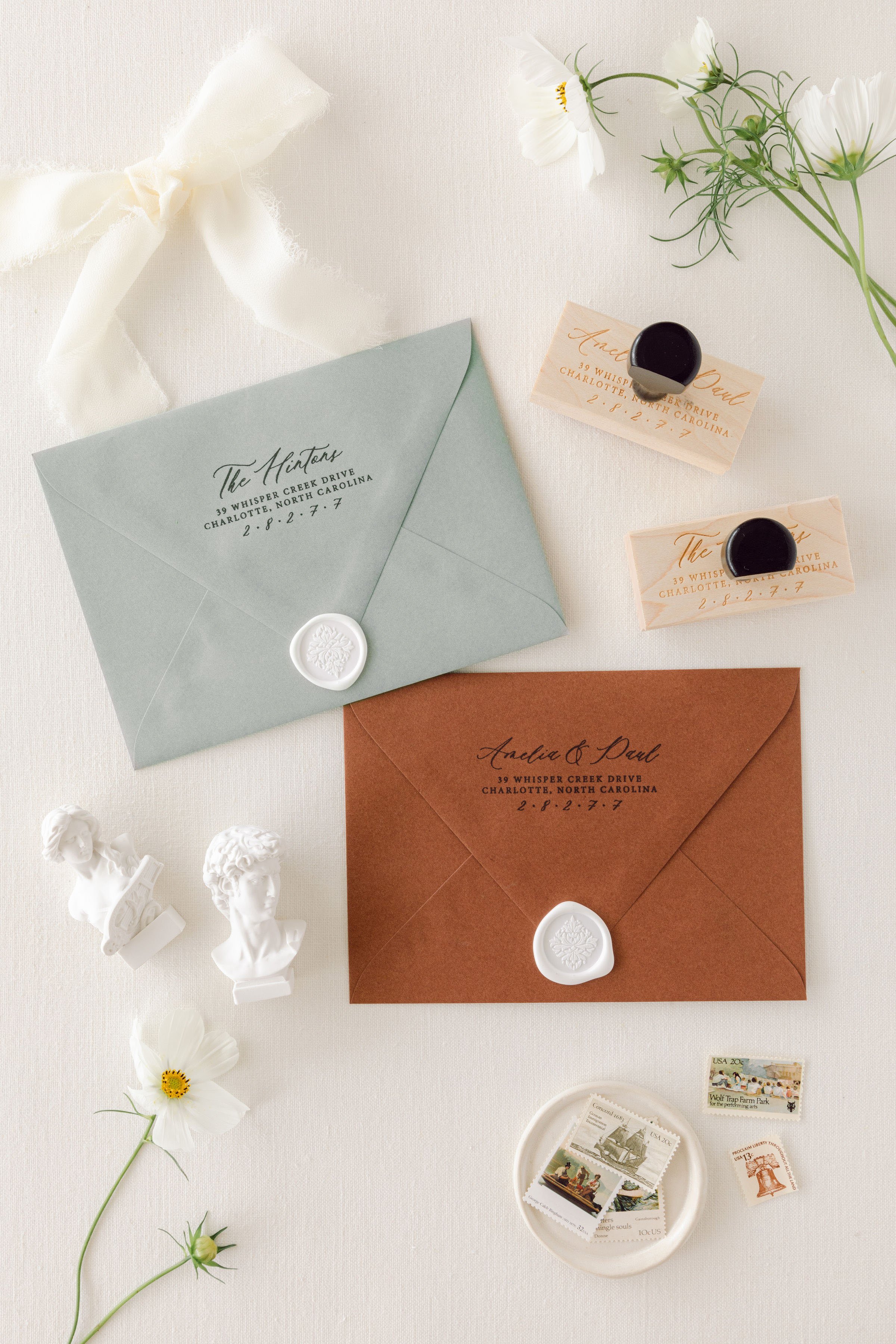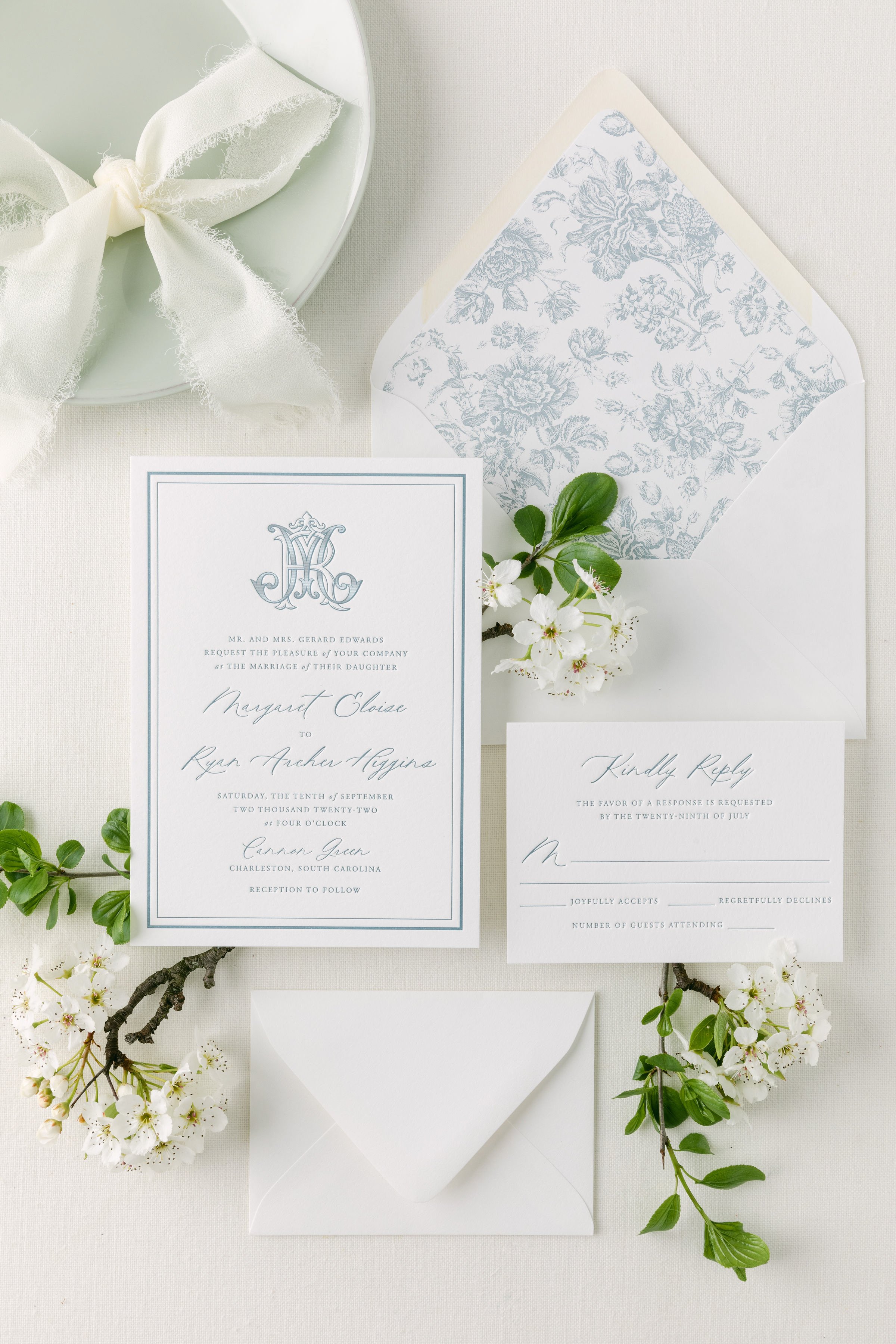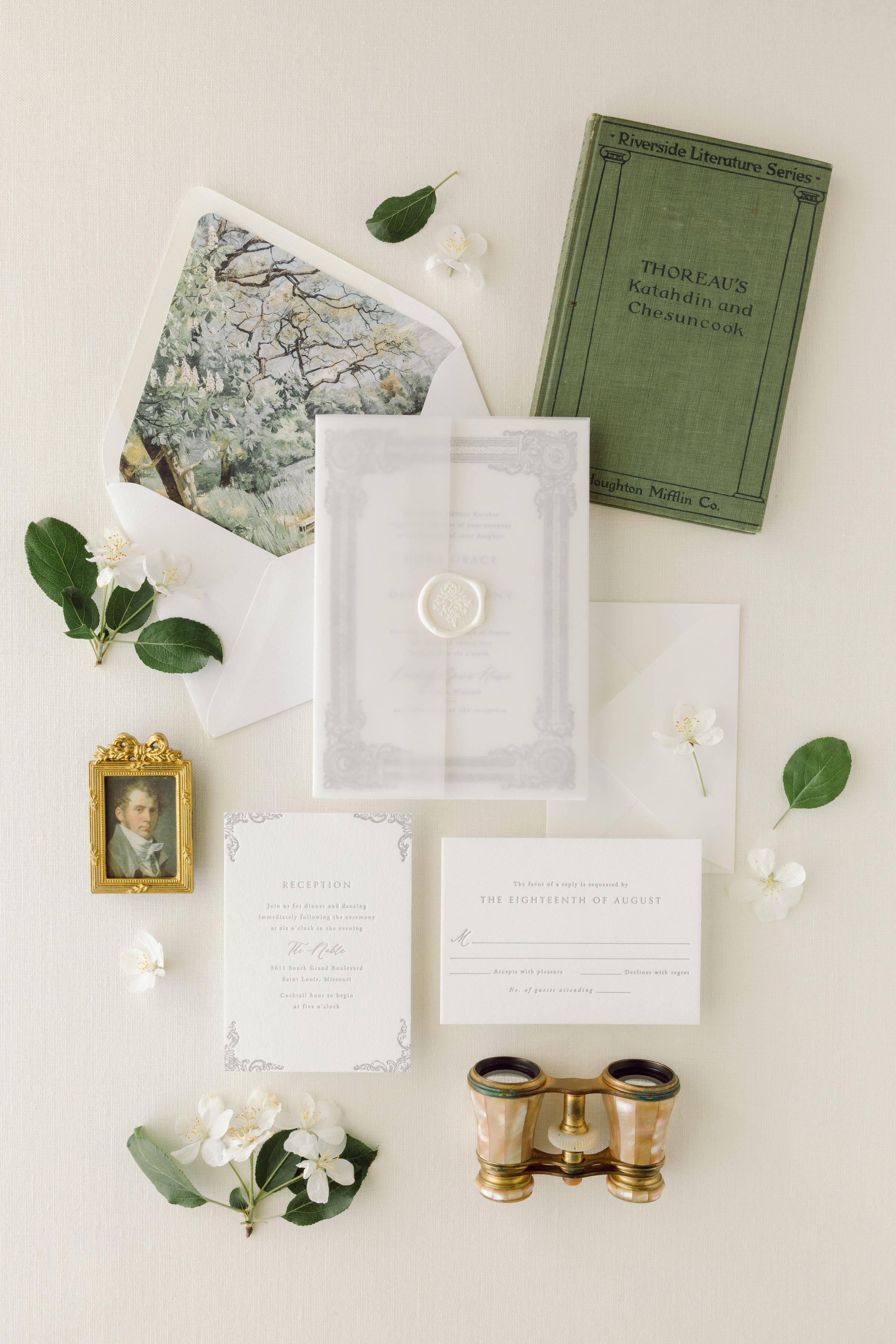Formal Wedding Invitation Wording
You’ve found the perfect invitation, now what?
It’s time to personalize your wedding invitation and make it your own! This is the most exciting part, but sometimes wedding etiquette can be a little tricky to navigate–especially if you desire very formal wedding invitation wording.
There can be a lot of sensitive scenarios involved (especially in the case of divorced and/or remarried parents), and of course you don’t want to hurt anyone’s feelings.
This is where wedding invitation etiquette comes in handy. Not only can etiquette help you avoid grammatical mistakes, but it can also prevent hurt feelings. (Yes, really!) Once you know the etiquette for wedding invitations, you’ll avoid leaving anyone out or stepping on anyone’s toes.
A quick Google search will turn up plenty of advice on formal wedding invitation wording, etiquette and so on. It can be overwhelming, especially since you are completely new to this. (They don’t teach this in school, amiright?)
There are many different variations of wedding invitation wording, but if you want a truly timeless and formal wedding invitation, today’s post is just for you.
If you desire an elegant affair, your wedding invitation wording should reflect that. Your wording is a subtle cue that lets guests know whether or not you are hosting an upscale wedding or a laid-back celebration, and it is often the only indication guests will get before the big day of how snazzy your wedding will be.
In this post, you'll learn a few simple steps for formal wedding invitation wording. Plus, get 12 wording samples to make all your own!
Let’s get started, shall we?
A wedding invitation should have the following components:
Name(s) of the host
A request to come to the wedding
Bride and groom’s names
Wedding date
Start time of event
Location
Reception details (optional, more details below)
But what does all of that even mean? Sometimes, it’s not as easy as just filling in the blanks. To help you navigate your own wording, I’ve broken down what each section means and what it should include.
The Host Line
The first line of your event indicates who is hosting (or paying) for the event. For a formal wedding, this is typically the bride's parents. However, it is common today for both families to contribute financially.
If the bride's parents are hosting, use...
Doctor and Mrs. John Collins
If the bride and groom’s parents are hosting, use…
Doctor and Mrs. John Collins
and
Mr. and Mrs. Pete Wilson
Spell out official titles like Doctor or Captain (unless the name is too long to fit on one line), but keep honorifics, such as Mr. and Mrs., abbreviated.
Optionally, if both families are hosting with the bride and groom, use…
Together with their families
Request Lines
This is where you invite guests to your wedding. Request lines also provide a subtle cue regarding what type of venue your wedding will be held in.
If your wedding is held inside of a church or place of worship, use…
Doctor and Mrs. John Collins
request the honour of your presence
at the marriage of their daughter
Especially formal weddings use the British spelling “honour” with a “u”. Keep in mind that if you decide to use the British spelling, you must also use “favour of a response” on your response cards to keep it consistent.
For weddings held at other venues (i.e. not in a place of worship), use…
Doctor and Mrs. John Collins
request the pleasure of your company
at the marriage of their daughter
This does not mean you are not having a religious ceremony or that your wedding isn’t formal. It’s simply a subtle cue to guests that your wedding will not be inside a church or place of worship.
If both parents are hosting the wedding, the third line should say “of their children”, such as…
Doctor and Mrs. John Collins
and
Mr. and Mrs. Pete Wilson
request the pleasure of your company
at the marriage of their children
If your host line is “together with their families”, use the following phrase beneath the bride and groom’s names…
request the honour of your presence
at their wedding
Or
request the pleasure of your company
at their wedding
Bride and Groom's Names
The bride’s name always comes first. In over five years of studying wedding invitation etiquette and answering questions from thousands of brides, I have yet to find an exception to this rule.
And I know there are situations where you may feel your fiancé’s name should come first. Personally, I went back and forth with this since my husband made a huge financial contribution to our big day. In the end, I used traditional wedding invitation etiquette (my name first) because I wanted to keep in line with tradition and set the tone for a formal event.
When the bride’s parents are hosting, use her first and middle name if her last name is the same as her parents. The groom’s full name is spelled out and includes his title, such as…
Doctor and Mrs. John Collins
request the honour of your presence
at the marriage of their daughter
Sara Marie
to
Mr. John Parker Wilson
If both the bride and groom’s parents are hosting, use both the bride and groom’s full names and drop “Mr.” from the groom’s name, such as…
Doctor and Mrs. John Collins
and
Mr. and Mrs. Pete Wilson
request the pleasure of your company
at the marriage of their children
Sara Marie Collins
to
John Parker Wilson
If the couple is hosting “together with their families”, include titles for the bride and groom. You will also include the bride’s last name since her parents are not mentioned, such as…
Together with their families
Ms. Sara Marie Collins
and
Mr. John Parker Wilson
request the pleasure of your company
at their wedding
Note: Usually, “Miss” is for women under 18.
Wedding Date and Time
The wedding date and year are always spelled out for a formal wedding. Numerals are not used. Keep in mind that there is no “and” between the year, i.e. two thousand twenty.
The time of the event is spelled out as well. For weddings that fall on a half hour, use “half after” rather than “four thirty” or “half past four o’clock”.
The phrases “in the afternoon” or “in the evening” are not necessary.
Here is an example of how the date and time should be written for formal wedding invitation wording:
Saturday, the thirty-first of August
two thousand nineteen
at half after four o’clock
Location
Keep it simple–you only need the name of the venue and the city and state. Spell out the city and state in full. You do not need the street address or zip code–unless you are hosting a destination wedding or if the wedding is taking place at a private residence instead of a wedding venue or church.
If you are worried out-of-town guests may get lost or confused, add a directions details card with the full venue address or add a wedding website details card, and notate venue details on your website.
Here is how the location should be written:
St. Patrick Catholic Church
Meridian, Mississippi
Reception
Especially formal celebrations do not include reception details on the main invitation, unless the ceremony and reception are at the same venue. If your reception is at a different address than your ceremony, include a separate reception card.
If your ceremony and reception are at the same location, use…
and afterward at the reception
Or
reception immediately following
Don’t Make These Grammatical Mistakes
Do not include registry details or the phrase “adults-only” on your wedding invitation. These phrases can come off as offensive. Instead, include a wedding website insert card, where you can notate links to your registry and age requirements on your site.
Now, let’s put it all together!
For a very formal wedding, avoid attire suggestions on the main invitation. Instead, include dress code details in the bottom right corner of your reception card or other details card.
Now let’s put all of those examples above together. Your formal wedding invitation wording could look something like this:
Doctor and Mrs. John Collins
request the pleasure of your company
at the marriage of their daughter
Sara Marie
to
Mr. John Parker Wilson
Saturday, the thirty-first of August
two thousand nineteen
at half after four o’clock
Chateau LeMoyne
New Orleans, Louisiana
and afterward at the reception
related blog posts



